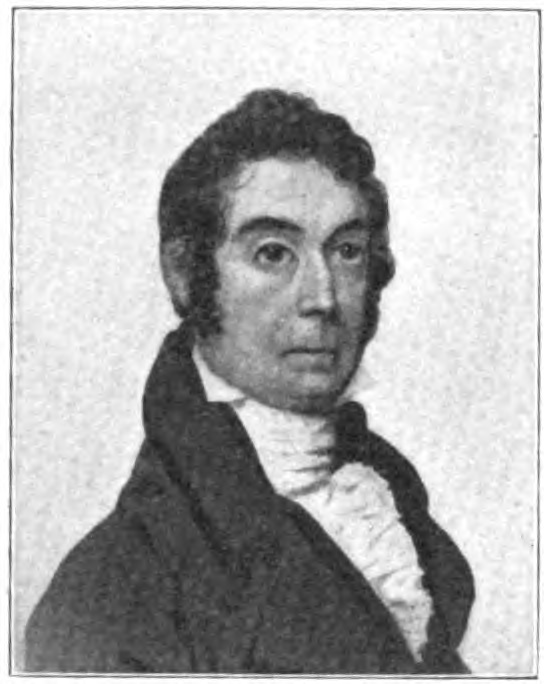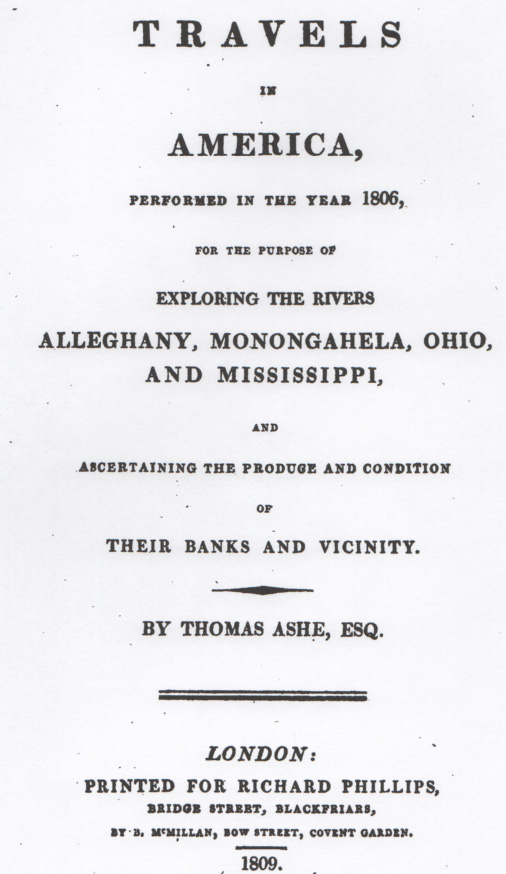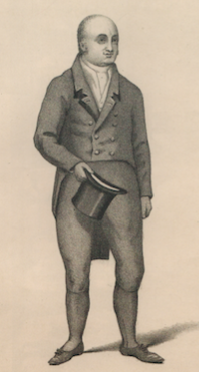By Paul A. Tenkotte
Special to NKyTribune
Have you ever met a person who seemed sophisticated, erudite, and trustworthy? Then, much to your chagrin — and perhaps to your heart and to your pocketbook too — you discovered that they were a fraud?
Thomas Ashe was such a man.
Reputedly born in 1770 in Glasnevin, County Dublin, Ireland, Thomas Ashe died in 1835. In-between those two years, however, it’s hard to ascertain exactly who and what he was. In the Times Literary Supplement of April 24, 1992, author Eric Korn declares that he was “the worst rogue, spiv, spendthrift, turncoat, seducer, deserter, literary journalist and all around scoundrel of a scoundrelly age.”

Dr. William Goforth (Wikipedia)
We know that Ashe wrote about 20 books, including a 3-volume autobiography of his life entitled, Memoirs and Confessions of Captain Ashe.
Ashe was also a world traveler. His 3-volume Travels in America included a description of Cincinnati and various other places in the Ohio Valley region, including Big Bone Lick. In fact, in volume two of his Travels in America, Ashe refers in several places to his “friend,” Dr. William Goforth (1766-1817).
That Ashe met and knew Dr. William Goforth is certain. In fact, he swindled Dr. Goforth, pardon the pun, in what I call the Big Bone Lick “Big Bone Heist.” Goforth, a respected physician of Cincinnati, was also a scientist who enjoyed excavating for specimens at Big Bone Lick.
Big Bone Lick, now a Kentucky State Park in Boone County, was privately owned in Goforth’s time. Featuring natural springs and salt licks, it was already nationally and internationally known in the late 18th and early 19th centuries for its treasure trove of remains of ancient animals.

Title page of Thomas Ashe’s Travels in America
In 1803, President Thomas Jefferson instructed Meriwether Lewis (on his way to join up with William Clark in Louisville for the famous Lewis and Clark Expedition) to visit Dr. Goforth in Cincinnati and to examine his Big Bone Lick collection. Goforth gave Meriwether Lewis some specimens and invited him to take others at his Big Bone camp to send to President Jefferson.
Lewis, in turn, sent the bones by boat down the Ohio River. At Natchez, the boat sank to the Mississippi River bottom, and the fossils were lost.
Nonetheless, Goforth still had quite a Big Bone Lick collection remaining, weighing about five tons. In 1804 or 1805, Goforth moved the collection to Pittsburgh, in the hopes that he could sell it to Peale’s American Museum or to the American Philosophical Society, both in Philadelphia. Instead, in 1806, the dashing but dastardly Ashe traveled down the Ohio River, assumed a French alias, met Goforth at Cincinnati, and contracted with him to sell his collection.
Returning to Europe, Ashe did indeed sell Goforth’s collection, but never reimbursed him for it.
The purchaser was William Bullock (1773-1849), owner of a museum in Liverpool. Most likely, Bullock had no idea that the collection was basically stolen and being offered for sale under false pretenses. In fact, Bullock even published and sold at the exhibit a souvenir brochure entitled Memoirs of Mammoth, and Various Other Extraordinary and Stupendous Bones, of Incognito, or Non-Descript Animals.
Ironically, the author was Thomas Ashe, himself a “non-descript animal” one might claim, and quite clearly, an “incognito” plagiarist of Goforth’s work.

William Bullock. Source: Michael P. Costeloe, William Bullock, Connoisseur and Virtuoso of the Egyptian Hall: Piccadilly to Mexico (1773-1849) University of Bristol, 2008.
After exhibiting the collection in Liverpool, Bullock “gave away some of the specimens, used others for barter, and auctioned off the remainder (p. 95),” according to Stanley Hedeen, author of a fascinating book entitled, Big Bone Lick: The Cradle of American Paleontology.
Hedeen further writes that “Several years later, he [Bullock] revealed that the clawed foot displayed at the museum was a fake that had been carved from the shoulder blade of an unknown animal” (p. 95). It seems that Ashe probably had another laugh, this time at the expense of Bullock.
Ironically, William Bullock traveled to America in 1827, and coming up the Ohio River, fell in love with Thomas Carneal’s Elmwood Hall home in what is now Ludlow.
Bullock purchased the home and its accompanying 1,000-acre grounds, returned to Europe, hired a noted architect (J. B. Papworth), planned a city named Hygeia where Ludlow currently is, and moved to his new Northern Kentucky estate. Although the town never materialized, despite the marketing attempts of Bullock in his own book, Sketch of a Journey through the Western States of North America, Bullock would himself seek more fossils from Big Bone.
Big Bone Lick is truly a national treasure.
To learn more about its new museum and its hours of operation, see this website.
We want to learn more about the history of your business, church, school, or organization in our region (Cincinnati and Northern Kentucky). If you would like to share your rich history with others, please contact the editor of “Our Rich History,” Paul A. Tenkotte, at tenkottep@nku.edu. Paul A. Tenkotte, PhD is Professor of History and Director of the Center for Public History at NKU.
























